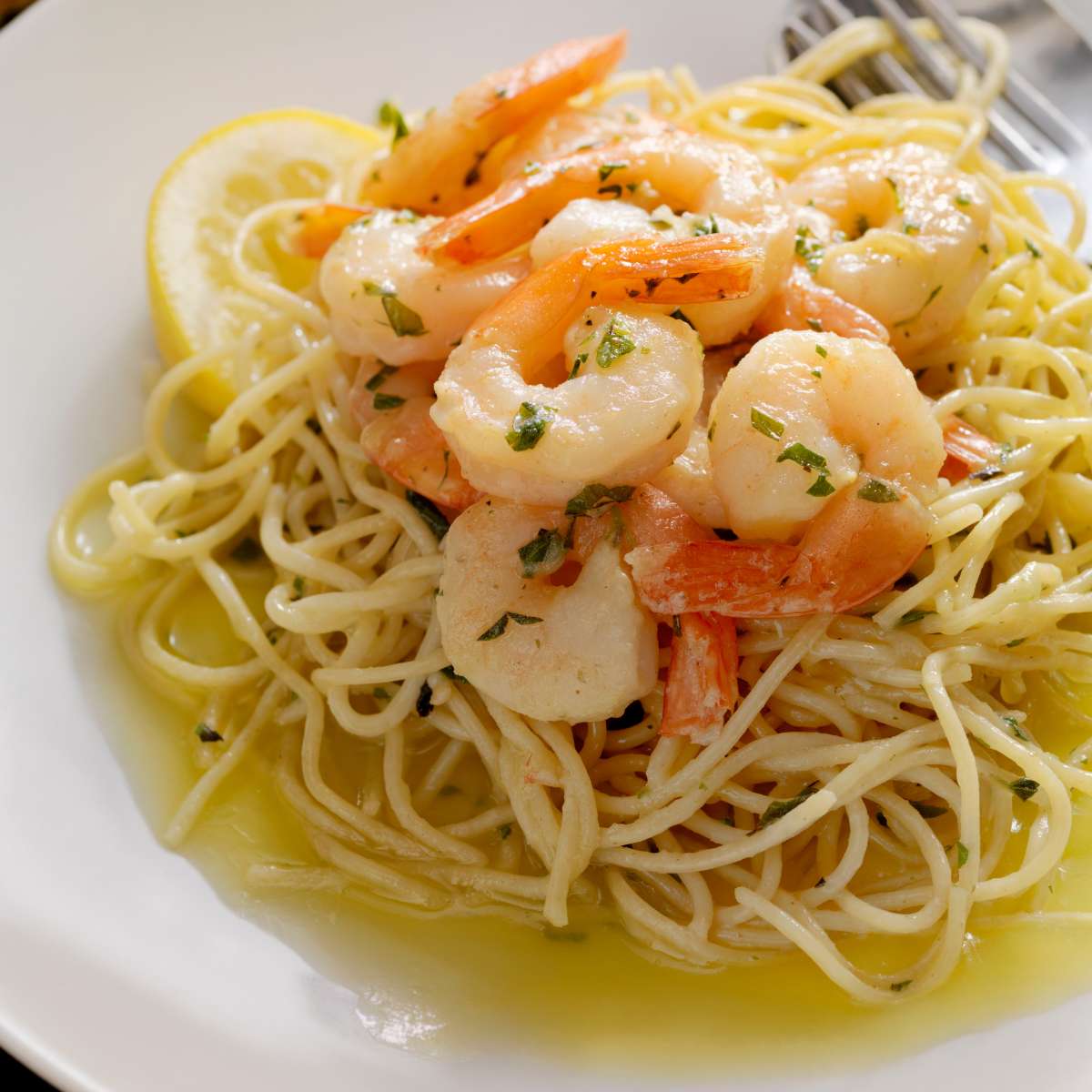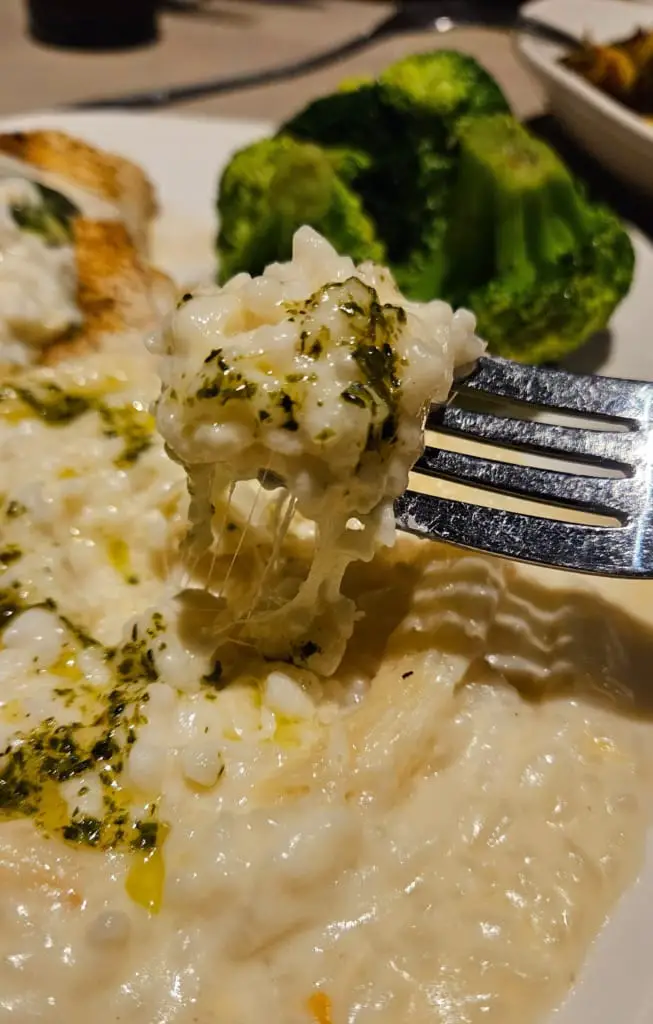Ever wonder what makes shrimp scampi, that beloved seafood dish, so irresistibly good? In this article, we’ll dive into the delectable world of what is shrimp scampi, exploring its culinary roots and what sets it apart from other seafood classics.
Whether you’re a seasoned chef or a curious foodie, understanding the nuances of this dish will enhance your cooking and dining experience. So, keep reading to uncover the secrets behind the savory magic of shrimp scampi.
What is Shrimp Scampi?
Shrimp scampi is a popular dish known for its rich flavor and quick preparation, making it a favorite for both weeknight dinners and special occasions. Traditionally, it involves sautéing shrimp in a sauce made from garlic, butter, white wine, and lemon juice, often tossed with pasta. This combination creates a light yet savory sauce that coats the shrimp and pasta, offering a balance of tangy and buttery flavors.
This dish originated from Italian cooking, specifically adapting from a style used to prepare scampi, which are tiny, lobster-like crustaceans. Italian immigrants in the United States substituted these with more readily available shrimp but kept the name. Today, it’s celebrated for its simplicity and the depth of flavor it delivers, highlighting the shrimp’s sweetness with the zest of lemon and the richness of the garlic-infused butter sauce.
The Italian-American Evolution of Shrimp Scampi
Shrimp scampi is a beloved dish that perfectly exemplifies the melding of Italian culinary traditions with American tastes. This dish has evolved from its roots in Italian cuisine to become a staple in American seafood restaurants. Here’s a closer look at how traditional Italian scampi transformed into the Italian-American shrimp scampi we enjoy today:
| Traditional Italian Scampi | Italian-American Shrimp Scampi |
|---|---|
| Langoustines | Shrimp |
| Olive oil and garlic base | Olive oil, garlic, sometimes tomatoes |
| Served on its own | Often served with pasta or bread |
| Simple herb seasonings | Variety of herbs, sometimes with a breadcrumb topping |
Traditional Italian scampi typically features langoustines, a type of small lobster found in the Mediterranean, simply prepared with olive oil and garlic. In contrast, the American version uses shrimp and enhances the base with additional elements like tomatoes, creating a richer flavor profile.
Additionally, while the traditional dish is often enjoyed on its own, the American adaptation commonly pairs the seafood with pasta or bread, turning it into a more substantial meal. This transformation not only showcases the adaptability of Italian dishes but also highlights the American inclination to modify and enrich immigrant cuisines, making them a celebrated part of the culinary landscape.
Understanding the Key Ingredients of Shrimp Scampi

Creating a delicious Shrimp Scampi involves more than just tossing ingredients together; it’s about understanding how each component enhances the dish. Let’s look at the essential elements that make Shrimp Scampi a beloved favorite:
Shrimp
The star of the dish, shrimp, is selected for its size and quality. Jumbo prawns are ideal as they remain succulent and meaty even after cooking, providing a satisfying bite that’s both tender and flavorful.
Olive Oil
Olive oil is not just for cooking; it’s a flavor enhancer. With its fruity undertones, it adds a subtle richness that complements the delicate taste of shrimp, making each bite a luxurious experience.
Wine
Choosing the right wine is crucial. Dry white wine or vermouth is recommended for their ability to blend seamlessly with the other ingredients. They contribute acidity and a complex flavor profile that elevates the shrimp from simple to gourmet. The alcohol in the wine also helps in deglazing the pan, ensuring that all the savory browned bits are incorporated into the sauce, enriching its overall taste.
Butter
Butter brings a velvety richness to the sauce, balancing the acidity of the wine and lemon. It helps emulsify the sauce, creating a smooth, cohesive coating for the shrimp that’s irresistibly creamy.
Herbs and Lemon
Fresh parsley and lemon (zest and juice) add a burst of freshness to the dish. The citrus notes cut through the richness of the butter and olive oil, while parsley provides a subtle herby backdrop that complements the overall flavor palette.
Garlic
Garlic is indispensable in Shrimp Scampi, infusing the dish with its unmistakable aroma and depth. It’s sautéed until fragrant, laying the foundational flavor that permeates the entire dish, marrying well with the butter and olive oil.
Secrets to a Succulent Shrimp: Prep and Cook Techniques
Mastering tender shrimp in your scampi isn’t just luck—it’s all about technique. Here’s how to ensure your shrimp are perfectly tender every time.
Tenderizing with Baking Soda
A sprinkle of baking soda raises the pH level of the shrimp, improving its ability to retain moisture, which keeps them disarmingly plump and tender even after a high-heat sauté. Just let them sit with this secret enhancer for about 15-20 minutes, and then rinse them off before proceeding with the cooking.
A sprinkle of baking soda raises the pH level of the shrimp, improving its ability to retain moisture, which keeps them disarmingly plump and tender even after a high-heat sauté. Just let them sit with this secret enhancer for about 15-20 minutes, and then rinse them off before proceeding with the cooking.
Sautéing to Perfection
Sautéing shrimp is less about luck and more about mastering the technique. Begin by heating your skillet to just below the smoking point and adding a thin layer of oil. This ensures that the shrimp do not stick and that they cook evenly. Add the shrimp in a single layer, taking care not to overcrowd the pan which can lead to uneven cooking and steaming rather than sautéing.

Allow the shrimp to sear until they just start to turn pink, then flip them once to finish. It’s crucial to remove the shrimp from the heat as soon as they are uniformly pink and slightly underdone, as they will continue to cook from residual heat, ensuring they remain tender and not overcooked.
Vermouth Vs. White Wine: Choosing the Best for Shrimp Scampi
Vermouth, a fortified wine flavored with various botanicals, can elevate your shrimp scampi with its complex notes. Its blend of herbs and spices adds depth and an aromatic intensity that regular white wines typically lack. This makes vermouth not just a cooking ingredient but a flavor enhancer that infuses the shrimp with a subtle yet distinct herbal bouquet that complements the garlic and butter beautifully.
In contrast, white wine, especially dry varieties like Pinot Grigio or Sauvignon Blanc, contributes acidity and fruitiness to the dish, helping to cut through the richness. However, it lacks the layered complexity that vermouth can bring. Using vermouth in shrimp scampi can reduce the need for additional seasonings, as its herbal notes are sufficient to enhance the natural flavors of the shrimp and other ingredients.
Choosing between vermouth and white wine depends on your taste preferences and the flavor complexity you desire in your shrimp scampi. Vermouth can turn an ordinary scampi into a gourmet experience with its unique blend of flavors, making it a worthy contender in your culinary arsenal.

Serving Suggestions for Shrimp Scampi
Shrimp scampi’s buttery and garlicky flavor makes it a versatile dish that pairs beautifully with a variety of sides. Here are some top choices to consider when serving this seafood classic:
Pasta
Spaghetti, linguini, and fettuccine naturally complement shrimp scampi, offering a delightful base that absorbs the rich sauce beautifully. Lemon orzo pasta is another excellent choice, adding a citrusy zing that enhances the shrimp’s flavor. For more on pasta varieties, check out our article on What is Pasta Made Out Of?.

Roasted Broccolini
The slight bitterness and crunchy texture of roasted broccolini provide a perfect counterbalance to the rich, buttery shrimp, making it an elegant and nutritious side.
Arugula Salad
A fresh arugula salad dressed lightly with olive oil and lemon pairs well with scampi, adding a peppery freshness that cuts through the dish’s richness.
Caesar Salad
The creamy dressing and crunchy croutons of Caesar salad pair seamlessly with the tender shrimp, adding texture and depth to your meal.
Creamy Polenta
For a heartier option, the combination of creamy polenta and shrimp creates a luxurious and satisfying meal. Learn how to perfect this dish in our article on How to Cook Polenta, where we explore the steps to achieving silky, flavorful polenta.
Risotto
A creamy, well-prepared risotto is a fantastic pairing for shrimp scampi, as it echoes the luxurious texture while the subtle wine and broth flavors used in risotto complement the garlic and lemon notes of the scampi. Find out more about making this dish in our article on How to Cook Risotto.
Italian Garlic Bread
No shrimp scampi meal is complete without a side of warm, buttery Italian garlic bread, perfect for sopping up that delicious scampi sauce.
Conclusion
We’ve journeyed through the flavors, techniques, and history that define shrimp scampi, uncovering why it remains a favorite in Italian-American cuisine. From the simple yet robust combination of garlic, butter, and lemon to the art of perfecting its tender shrimp, shrimp scampi is a testament to the beauty of minimal ingredients creating maximum flavor.
As you incorporate these insights into your culinary repertoire, embrace the versatility of shrimp scampi, and don’t be afraid to put your own twist on this classic. So go ahead, gather your ingredients, and let the scampi magic unfold in your kitchen.
FAQ
What type of shrimp works best for shrimp scampi?
For shrimp scampi, larger shrimp, such as jumbo or large sizes, are ideal as they remain juicy and tender through the cooking process. Make sure they are well-cleaned and deveined before cooking.
Can I use frozen shrimp for scampi?
Yes, frozen shrimp can be used for scampi, but it’s important to thaw them properly first. Place them in the refrigerator overnight or under cold running water to ensure they cook evenly and maintain their texture.
Is it necessary to remove the shrimp tails for scampi?
While it’s not necessary to remove the tails, doing so can make the shrimp easier to eat, especially if serving the scampi as a pasta dish. However, leaving the tails on can enhance the presentation and add flavor to the dish.
Should I be mincing or microplaning my garlic for shrimp scampi?
Microplaning garlic allows it to blend more thoroughly into the sauce, creating a smoother taste profile without any chunks. If you prefer a milder garlic taste, mincing is adequate as it releases less garlic juice and flavor.
How do I achieve a creamy, buttery scampi sauce without it separating?
To prevent separation, ensure your pan isn’t too hot when adding the butter. Melt the butter slowly on medium heat, and consider emulsifying it with a bit of the pasta water or broth to stabilize the sauce.
How important are fresh herbs and lemon in finishing the dish?
Fresh herbs and lemon are crucial in shrimp scampi. They cut through the richness of the butter and provide a bright, fresh finish that elevates the whole dish. Fresh lemon juice and herbs like parsley add a burst of flavor right before serving, ensuring a vibrant taste experience.
What can I substitute for white wine in shrimp scampi?
If you prefer not to use white wine, you can substitute it with chicken broth or a mixture of lemon juice and water for a non-alcoholic version that still provides some of the desired acidity and taste.







